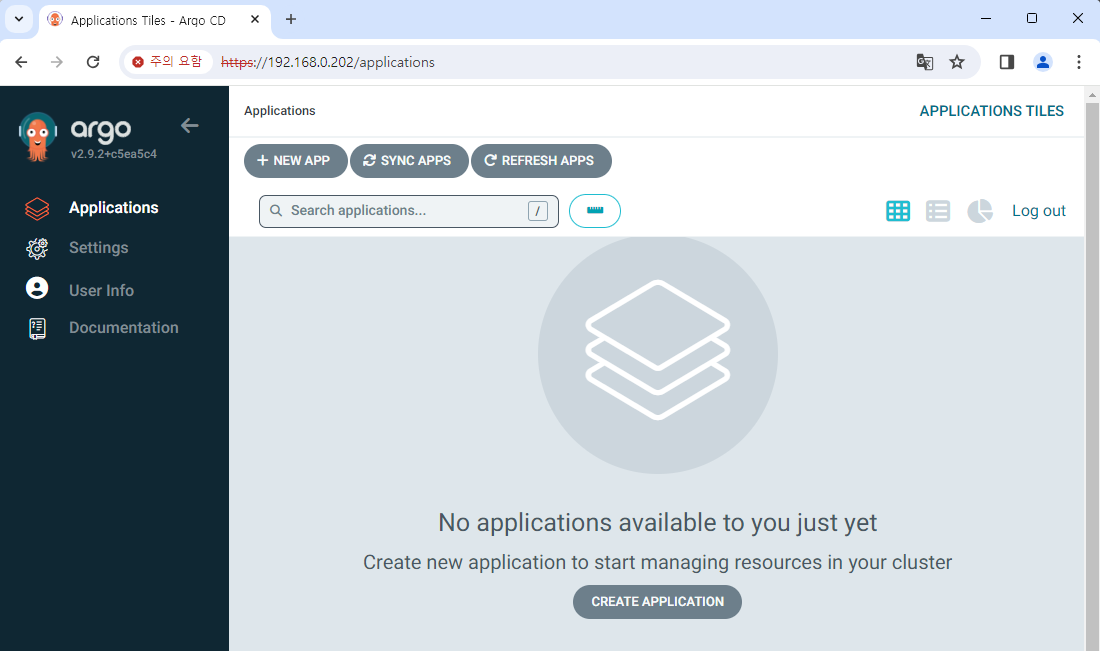Deploy Argo CD
In this document, we will deploy and log in to Argo CD.
If you haven't downloaded the Helm chart yet, download it from following link:
https://github.com/argoproj/argo-helm
Modify Helm chart
As we did previously, let's simply modify the chart.
-
Change
fullnameOverrideto the name what you want.
For example:myargocd. -
To set up load-balancer, modify
values.yamllike below:values.yaml(...)
server:
(...)
## Server service configuration
service:
# -- Server service annotations
annotations: {}
# -- Server service labels
labels: {}
# -- Server service type
type: LoadBalancer
# -- Server service http port for NodePort service type (only if `server.service.type` is set to "NodePort")
nodePortHttp: 30080
# -- Server service https port for NodePort service type (only if `server.service.type` is set to "NodePort")
nodePortHttps: 30443
# -- Server service http port
servicePortHttp: 80
# -- Server service https port
servicePortHttps: 443
# -- Server service http port name, can be used to route traffic via istio
servicePortHttpName: http
# -- Server service https port name, can be used to route traffic via istio
servicePortHttpsName: https
# -- Server service https port appProtocol. (should be upper case - i.e. HTTPS)
# servicePortHttpsAppProtocol: HTTPS
# -- LoadBalancer will get created with the IP specified in this field
loadBalancerIP: "192.168.0.202"
# -- Source IP ranges to allow access to service from
loadBalancerSourceRanges: []
# -- Server service external IPs
externalIPs: []
# -- Denotes if this Service desires to route external traffic to node-local or cluster-wide endpoints
externalTrafficPolicy: ""
# -- Used to maintain session affinity. Supports `ClientIP` and `None`
sessionAffinity: "" -
Argo CD chart has a dependency, and it's usually downloaded as a
.tgzfile.
If there is an item/*.tgzin the.helmignorefile, delete this.
Deploy & Log in
Argo CD has a separated UI and can be used independently from other Argo apps.
So we'll deploy it in a separate namespace here as well.
Deploy Argo CD with the following command.
helm dependency update ./argo-cd
helm install my-argocd ./argo-cd -n argo-cd --create-namespace
Now we need login information.
Argo CD requires ID/password for login.
The default ID is admin, and password can be checked with the following command.
kubectl -n argo-cd get secret argocd-initial-admin-secret -o jsonpath="{.data.password}" | base64 -d
Access to the IP address set in Argo CD and log in, then you can check a screen like this.
